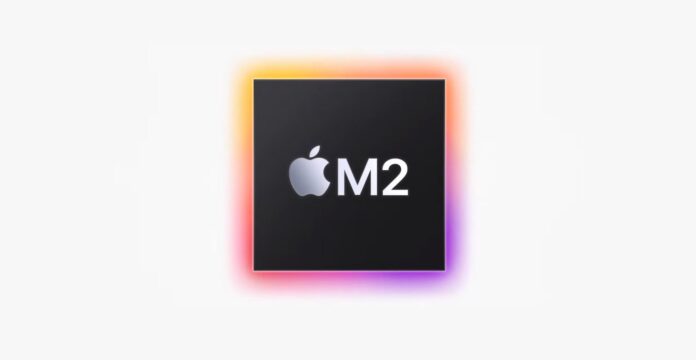With the presentation of the Apple M2 SoC, which took place on the occasion of the opening keynote of WWDC 2022, the Cupertino house laid the foundations for the launch of a new generation of chips that will accompany us for the next few months, of which M2 – in its basic configuration – it is nothing more than the first piece.
As happened in recent months, in fact, it is expected that Apple is already working on Pro, Max and Ultra variants that will arrive in the course of 2023 within the products of the MacBook Pro family, Mac Studio, iMac and so on. The introduction of M2 showed interesting improvements in performance even at (almost) parity of production process, but it seems that the next variants will push the accelerator further on the power front, not only with regard to the scalability of the cores.
One of the most striking elements of the M2 presentation was the conservative choice of adopting TSMC’s second generation 5nm production process, instead of switching to 4nm. This would have allowed to further increase the number of transistors with the same die surface area, however this was not done.
As reported by 9to5Macwhich quotes the analyst Jeff Pu from Haitong Intl Tech Research, it seems that the leap in the production process will take place at the end of 2022, at least as regards mass production. In fact, we speak of the transition to 3 nm of TSMC just in conjunction with the presentation of M2 Pro and that all other versions – so too Max and Ultra – will continue to be realized at 3 nm.
This could lead to a performance increase more than proportional to the increase in cores, since the passage to a new production process for the same architecture allows to further improve what is already possible on the basic versions. With the M1 series, in fact, the increase in performance between the various chips was very linear and easily calculated based on the number of CPU and GPU cores (the doubling of the cores corresponds to an almost doubling of the performances in that sector), while things might be different in the relationship between the M2 and the Pro, Max and Ultra versions, which might enjoy one higher transistor density and even lower power consumption.
In his report Pu also mentioned iPadsuggesting that Cupertino’s upcoming tablets will also be based on a 3 nm chip. At this point the scenario becomes even more complicated: it is possible that the new iPad Pro are even equipped with a M2 Pro? Or maybe it’s possible that Apple will also make a M2 base at 3 nmleaving the 5nm version only on the new MacBook Air and MacBook Pro 13 “? At the moment it is too early to answer this question, but the future of the Apple tablet is looking more and more interesting.
Finally, Pu also agrees with Kuo that Apple’s first AR / VR headset will not be featured in any of the remaining 2022 appointments, but will be the subject of an announcement following Chinese New Year 2023, with mass production likely leave as early as February. In short, for the viewer we still have to wait at least a year before being able to see it on the market. Among other things confirmed by Pu there would also be the adoption of a periscope zoom camera on the iPhone 15 Pro and the transition to Apple’s proprietary modems already in the course of 2023.













